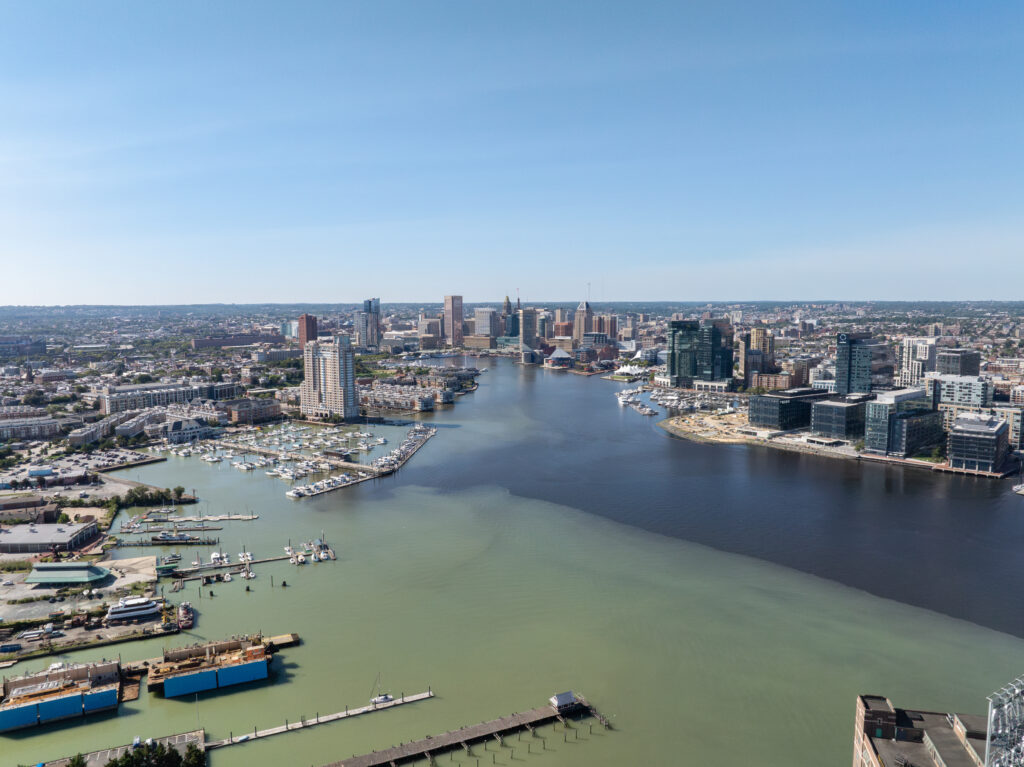A “pistachio tide” appears in the Inner Harbor on the morning of Sept. 3. The naturally occuring algae bloom is suspeced in a massive fish kill in the harbor Wednesday. Photo courtesy the National Aquarium.
An estimated 24,000 fish, mostly juvenile Atlantic menhaden, turned up dead in the waters of the Inner Harbor on Wednesday morning, according to the Maryland Department of the Environment.
The department said that as part of its investigation into the fishkill, it found no evidence of pollution that might have caused the fish to die. Rather, it said in a statement Wednesday, that water measurements indicated a lack of oxygen in the harbor likely killed the fish.
Recent days of cooler weather can cause the water in the harbor to “turn over,” a department statement said, bringing the harbor’s deeper waters, which are starved of oxygen, closer to the surface. Fish that cannot escape that zone of low dissolved oxygen will die.
The fish apparently died between Tuesday and Wednesday, when they were found near piers 5 and 6.
The National Aquarium echoed the department, saying in a news release Wednesday that the fishkill was likely the result of “pistachio” and “mahogany tides” in recent days. The statement said that such tides have nothing to do with water quality, but are “naturally occurring, often temperature-related seasonal phenomena which happen one-to-four times per year, lasting several days at a time, after which water quality improves.”
Video courtesy the National Aquarium
The aquarium statement said that a pistachio tide – named for its pistachio green color – occurs during a thermal inversion, when cool temperatures cause surface waters to sink, “pushing sulfur bacteria living on the bottom of the harbor to the surface.” Once exposed to sunlight, the bacteria engage in anoxygenic photosynthesis — photosynthesizing without producing oxygen in the process, but actually using up what oxygen is there in the water.
“The result is a green—pistachio green—algal bloom which looks and smells odd” while depriving aquatic animals of oxygen.
The aquarium also said the harbor has seen mahogany tides recently. Those are blooms of brown algae on warm, dry days that are fed by nitrogen and phosphorous runoff. The blooms can block sunlight while causing dissolved oxygen levels to plummet, starving aquatic animals of the oxygen they need to survive.
Aquarium staff have seen more animals than usual taking shelter recently in the new Harbor Wetlands exhibit, which is equipped with aerators that help oxygenate water in the exhibit. The animals started showing up in the exhibit after the recent pistachio and mahogany tides, the aquarium statement said.
The Department of the Environment said that the estimated 24,000 dead fish in the harbor were almost all Atlantic menhaden, but that several catfish, white perch and a couple of blue crabs were also seen in the fishkill.

